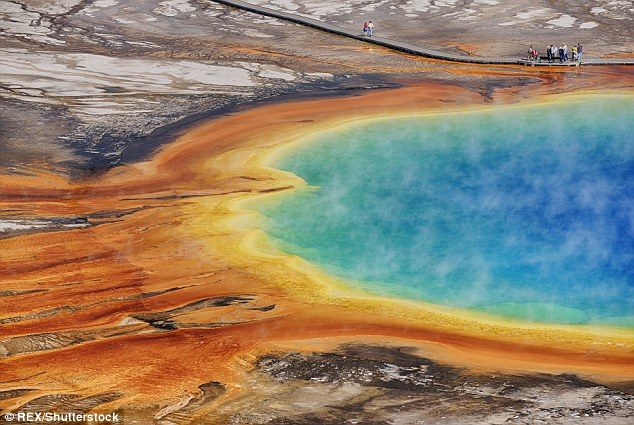
An underwater 'fountain' of magma has been found beneath Yellowstone supervolcano, heightening fears that a major eruption is on the way.
Researchers found a column of hot volcanic ash known as a magma 'plume' beneath the volcano, and they believe it stretches all the way from Mexico.
Experts suggest the plume could be the source of the heat that drives so much of the volcano's surface activity, such as its world-famous bubbling springs.
The news follows a spate of four mini-tremors in the area last week that raised fears Yellowstone's supervolcano is about to blow.
Comment: Thousands of termors over the past year, a recent tremor swarm, the deformed ground surrounding Yellowstone due to increased pressure and recently rare activity was recorded from one of Yellowstone's Geyser Steamboat - an uptick in activity is evident.
A magma plume is an unusual geological feature that lies at the boundary between the Earth's core and the mantle, and rises through the mantle into the crust.
Though still just a theory, this abnormality would exist as a vertical stream of magma.
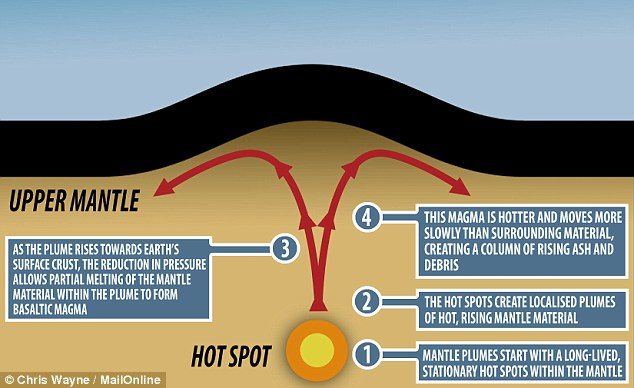
Whether or not a mantle plume might lie beneath Yellowstone National Park has been hotly debated for decades.
But using new imaging techniques, two researchers at the University of Texas suggest they have finally found proof of the elusive column.
They analysed seismic activity around Yellowstone using data obtained by the USArray network, which has listening stations positioned across North America.
Based on these readings, the team discovered a 45 by 34-mile channel (72x55km) where seismic waves are slower.
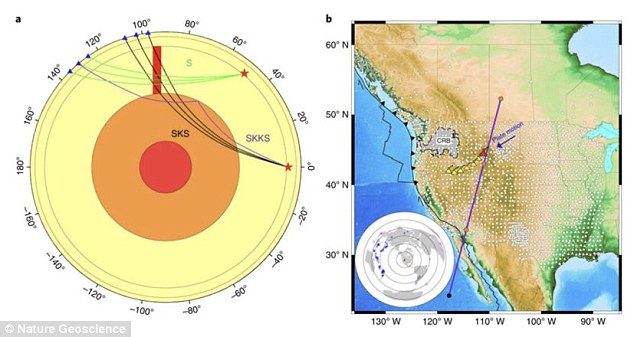
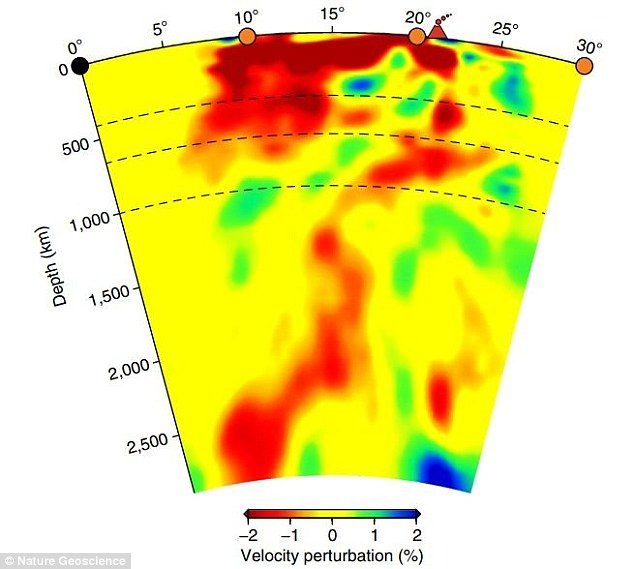
They suggest this 'long, thin, sloping zone' is filled with unusually warm material and forms parts of a mantle plume that stretches all the way from Mexico.
The researchers calculated that the mantle is hotter than any of its surroundings, reaching temperatures of around 600 to 800 degree Celsius (1,100-1,450°F).
This hot column may be enough to drive surface activity at the park, scientists said, and may explain a recent increase in volcanic activity in the area.
Previous studies have been unable to identify if a magma plume runs under the park because imaging techniques available to scientists were not accurate enough.
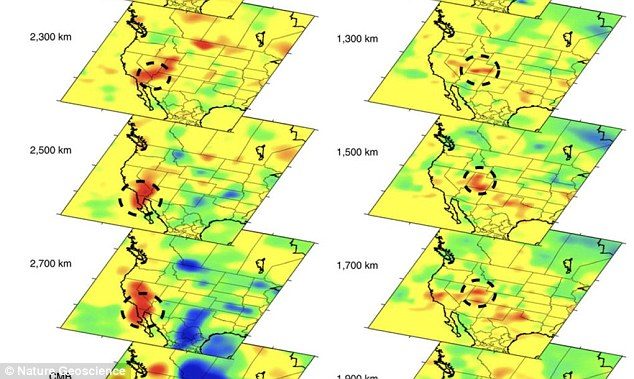
The researchers, led by University of Texas geologist Dr Peter Nelson, wrote in their paper: 'Our results strongly support a deep origin for the Yellowstone hotspot, and also provide evidence for the existence of thin thermal mantle plumes that are currently beyond the resolution of global tomography models.'
Some are worried that recent heightened volcanic activity at Yellowstone may indicate the park's subsurface supervolcano may be about to erupt.
Below the surface of Yellowstone, which lays across parts of Wyoming, Montana and Idaho, lies the Caldera supervolcano, which last erupted approximately 630,000 years ago.
Yellowstone is home to several faults, and has a long history of seismic activity. As natural processes occur beneath the surface and 'stress effects' from past events continue to maintain their hold, the area remains a 'hotbed of seismicity and swarm activity,' according to USGS
A series of four mini-tremors in the area last week raised fears that Yellowstone's supervolcano is about to blow again.
The most recent quake came on March 11 when a 1.5 tremor shook the volcano just hours after a 1.8 quake was also detected nearby.
But experts said this is a relatively quiet period for tremors in the area. Normally, there are 50 minor earthquakes around the volcano every week.
Tom Skilling, a meteorologist for WGN News, a local news site in Chicago, said: 'Minor earthquakes occur in the Yellowstone area 50 or more times per week, but a major eruption is not expected in the foreseeable future.'



Comment: Due to a slow down in the Earth's rotation, scientists have been predicting an upsurge in earthquakes and volcanoes, and we're seeing other incredible events that are most likely related - but it's not just the Earth that's shifting, weather worldwide is increasingly chaotic: